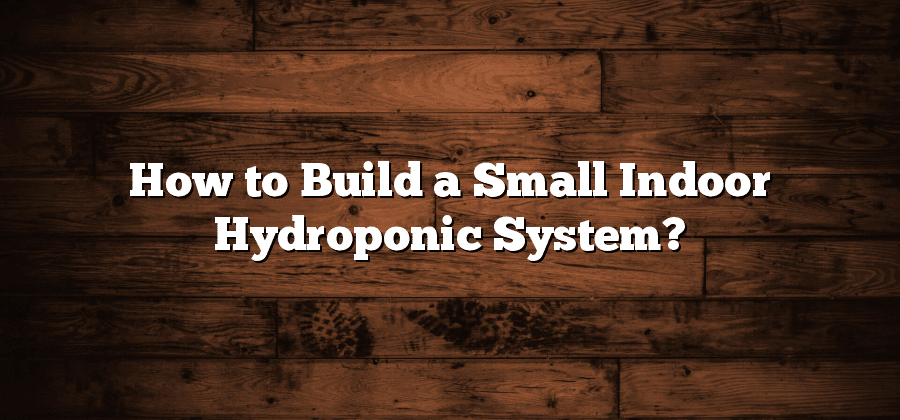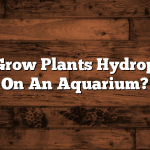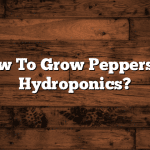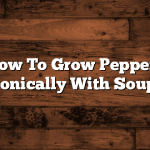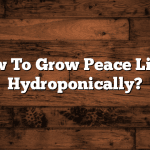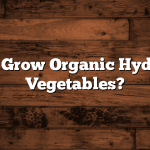Selecting the Right Hydroponic Setup
When it comes to selecting the right hydroponic setup, there are several factors to consider. Firstly, you’ll want to determine the size and space requirements for your setup. This will depend on how much space you have available and how many plants you intend to grow. Additionally, you’ll need to consider your budget and decide whether you’ll be investing in a pre-made kit or assembling your system from individual components.
Secondly, it’s important to consider the type of hydroponic system that suits your needs. There are various options available, including nutrient film technique (NFT), deep water culture (DWC), and aeroponics. Each system has its advantages and disadvantages, so it’s crucial to research and understand the requirements and capabilities of each before making a decision. By considering these factors, you’ll be well on your way to selecting the right hydroponic setup for your specific needs and goals.
Choosing the Ideal Growing Medium
Hydroponics is a unique and innovative method of growing plants without soil. In this system, plants receive all the necessary nutrients through a nutrient-rich solution. However, to successfully implement hydroponics, choosing the ideal growing medium is crucial.
The growing medium in hydroponics serves as a support system for plants’ root systems. It helps anchor the plants and provides stability as they grow. The medium also plays a vital role in maintaining proper moisture levels and delivering oxygen to the roots. Some commonly used growing mediums in hydroponics include perlite, vermiculite, coco coir, expanded clay pellets, and rockwool. Each medium has its own characteristics, and selecting the appropriate one depends on various factors such as plant type, system type, and desired outcome. A suitable growing medium promotes healthy root development and ensures the plants receive adequate oxygen and moisture, facilitating optimal growth.
Picking the Best Plants for Hydroponics
When it comes to selecting the best plants for hydroponics, there are a few key factors to consider. First and foremost, it’s important to choose plants that have a high tolerance for growing in water-based systems. Certain plants, such as lettuce, spinach, and herbs like basil and mint, tend to thrive in hydroponic setups. These plants have shallow root systems and are able to absorb nutrients easily from the water. On the other hand, plants with larger, more complex root systems like tomatoes and peppers may not be as well-suited for hydroponics, as they require more space and nutrients to grow properly.
Another aspect to consider when picking plants for hydroponics is their growth rate and yield potential. Some plants, such as leafy greens and herbs, have a relatively short growing cycle and can produce multiple harvests. This makes them ideal for hydroponic systems, as they can provide a continuous supply of fresh produce. Other plants, like fruits and certain vegetables, may require more time and space to grow, making them better suited for larger-scale hydroponic setups. Ultimately, the key is to choose plants that align with your goals and resources, ensuring optimal growth and productivity in your hydroponic garden.
Providing Adequate Lighting for Optimal Growth
One of the key factors in achieving optimal growth in a hydroponic system is providing adequate lighting. The right lighting not only supports photosynthesis, but also influences the overall health and productivity of your plants. When it comes to selecting the right lighting setup for your hydroponic system, there are a few factors to consider.
First, it is important to understand the different types of lighting available for hydroponics. The most common options include fluorescent lights, high-intensity discharge (HID) lights, and light-emitting diode (LED) lights. Each type has its advantages and disadvantages, so it is crucial to do your research and choose the one that best suits your specific needs. Additionally, considering the light spectrum and intensity is crucial for ensuring optimal growth. Plants have specific light requirements at various stages of their growth cycle, and providing the right light spectrum and intensity can significantly impact their development. It is advisable to consult a lighting expert or hydroponics specialist to help you select the most suitable lighting setup for your hydroponic system.
Understanding the Importance of Nutrient Solutions
Hydroponics, the art of growing plants without soil, is gaining popularity among both hobbyists and commercial growers. One key aspect of successful hydroponic gardening is understanding the importance of nutrient solutions. These solutions, also known as hydroponic fertilizers, provide plants with the essential minerals they need for optimal growth and development.
Nutrient solutions for hydroponics are carefully formulated to ensure that plants receive a balanced diet. They typically contain a mix of macronutrients, such as nitrogen, phosphorus, and potassium, as well as micronutrients like iron, manganese, and zinc. These nutrients are dissolved in water, allowing plants to absorb them directly through their roots. By providing plants with the precise amount and combination of nutrients they require, hydroponic nutrient solutions eliminate the guesswork involved in traditional soil-based farming. This targeted approach not only maximizes plant growth but also minimizes the risk of deficiencies or toxicities. In the next section, we will delve deeper into the different types of nutrient solutions available for hydroponics and how to choose the right one for your specific needs.
